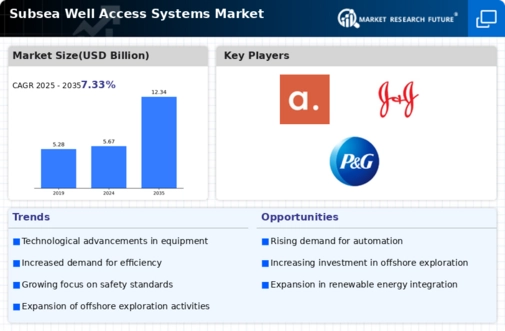Market Trends
Key Emerging Trends in the Subsea Well Access Systems Market
To retain their share in the competitive Subsea Well Access Systems market, manufacturers utilize numerous strategies. Market positioning strategies are essential for creating brand identity and attracting potential buyers. One common technique is differentiation, which is when companies emphasize distinguishing product features or technical enhancements. For example, some sell sub-sea well access systems containing higher durability, deep diving capability, or advanced remote operating system facilities. Additionally, cost leadership strategy is important as it makes businesses become the most competitively priced alternatives in their markets. For instance, it can be done by optimizing manufacturing processes, sourcing materials efficiently, or negotiating great deals with suppliers to offer competitive prices without compromising on quality. Having positioned themselves as an affordable choice while maintaining performance standards, these firms aim at price-sensitive segments of their markets, hence expanding their customer base. Besides this, niche targeting has also been adopted by various corporations that concentrate on serving particular sections of the sub-sea well access systems domain rather than focusing on general market trends. Moreover, customer-centric approaches play a critical role in marketing positioning strategies. Some businesses emphasize outstanding services to customers after buying from them, provision of after-sales support, and customization options, all of which contribute highly to the creation of a loyal client base. In addition to this, collaboration and partnership also significantly impact market share positioning within the sub-sea well access systems market segment. Correspondingly to other company players and other technology providers, they form alliances or even integrate their systems with complementary products. For example, a manufacturer of sub-sea well access systems may combine efforts with robotics companies to form integrated solutions that add value to consumers. Consequently, such partnerships not only lead to improved product offerings but also widen the market through shared distribution channels and combined expertise. Another way of holding market share is innovation as a strategy for ensuring market share. To become industry leaders, these companies invest in R&D, keep introducing new features, and stay ahead with technological advancements. Doing this makes them continue to be attractive to early adopters and, at the same time, maintain a strong position in the industry. In positioning themselves within the Subsea Well Access Systems market, which is characterized by diverse and multifaceted strategies used for this purpose. Various firms use different combinations of differentiation, cost leadership, niche targeting, customer-centricity, collaborations, and innovation in order to make headway in their coverage map. This begins with understanding what the market needs. Thus, enterprises strive not just to capture shares but also to remain within these markets while expanding further on.






Leave a Comment